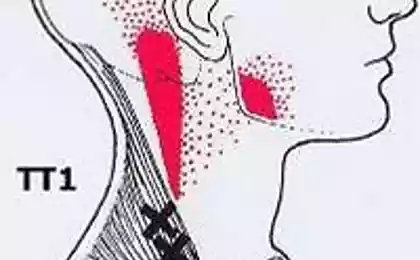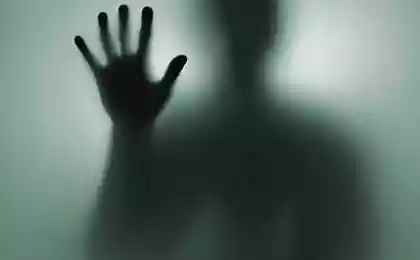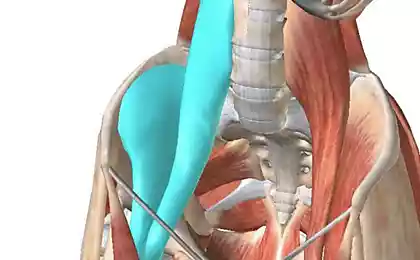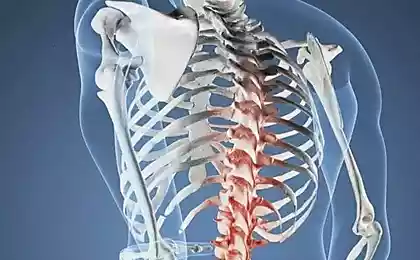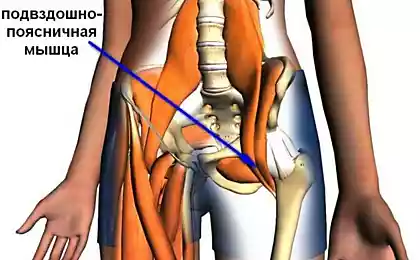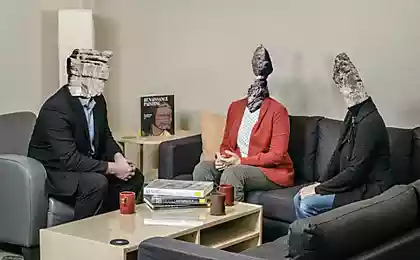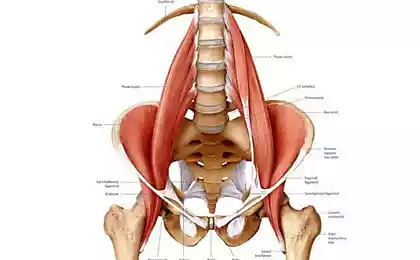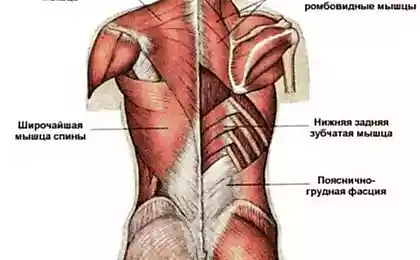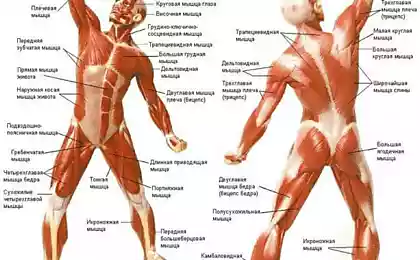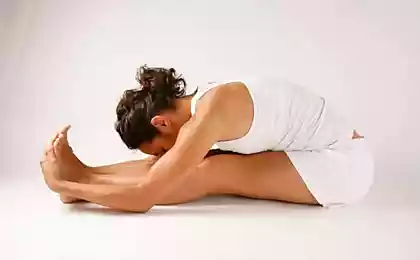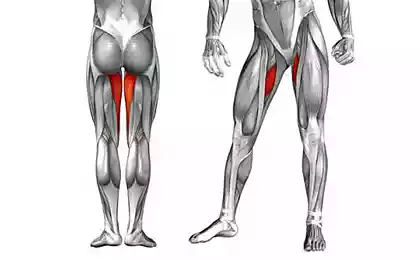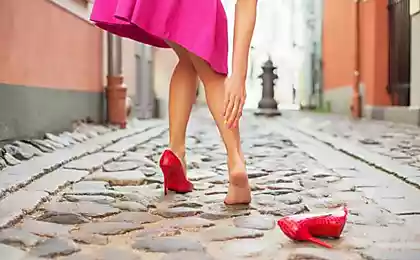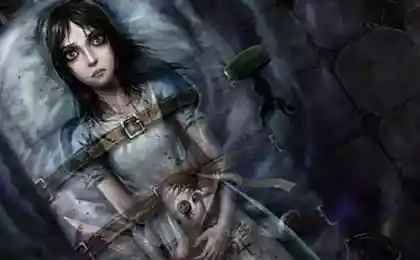558
5 misconceptions about the painful muscular syndromes
Painful muscular syndromes one of the most frequent complaints from patients. In the last 20 years, rapidly developed manual therapy, which was found shortened painful muscles, producing relaxation and stretching, eliminated the limitation of spinal motion segments. But look around, in recent years, patients with the painful muscular syndromes became more.
If the medicine is successful steps forward, improving diagnostics and medical treatment that allows patients more suffer from the painful muscular syndromes?
To answer this question it is necessary to find the cause. And it's not easy. So many misconceptions surround the painful muscular syndromes as a web, through which the doctor difficult to get.

MISCONCEPTION # 1
For a long time it was believed that the painful muscular syndromes is a consequence of osteochondrosis. Low back pain, as degenerative disease, or aging of the spine leads to the fact that disturbed the position of the vertebrae, intervertebral comprimida nerves and cause pain, so the treatment should be directed at elimination of bone growths, increased height of the intervertebral disc.
This assumption is not consistent because low back pain, as the ageing of the spine, from year to year progresses, pain syndromes occur predominantly in young and even children, and old age — at the stage of rapid development of osteochondrosis, pain syndromes disappear. But most importantly, pain syndromes appear, then disappear, and degenerative disc disease only progresses.
MISCONCEPTION # 2
Pain syndromes are connected with a vertical upright posture of man, so he is doomed to pay with pain syndromes for static overload of the muscles.
This assumption is not consistent because is very well known many patients who have pain syndromes appear in a horizontal position at night.
The real reason:
Pain syndromes in a vertical position appear only when the patient is in a stopped fall like the tower of Pisa, and forced other parts of the spine to keep from falling.
If a person is optimally Eiffel tower, loading the same muscles, there's no reason for formation of pain syndromes.
MISCONCEPTION number 3
The reason for development of pain is an uncomfortable position when the patient gets it, lying in a horizontal position. So treatment need to buy a lot of extra pillows, mattresses.
Again, this assumption is not consistent:
because of pain the patient is experiencing all night, and at any given time. For example, from one hour to three many patients Wake up from that numb hands, and then quietly fall asleep. While others Wake up from pain in the lumbar spine from five to seven.
Why only short time?
The real reason
This is due to the fact that at a particular time of the day there is activity of a certain Meridian of the body. During its activity decreases the tone of certain skeletal muscles, support the spine and there is compression of adjacent vessels and nerves, which leads to pain syndrome.
MISCONCEPTION 4
Pain syndromes is a consequence of trauma to the branches of the spinal nerves, the irritation causes a spasm and the shortening of the muscles innervated by them. Therefore, the most effective is the use of therapeutic drug blockades, when in shortened tight muscles were injected the pain killers.
This assumption is untenable, because:
Diseases of the peripheral nervous system are accompanied by a reduction in tone and excitability of the muscle, arm or leg just shrinks and loses its strength. Only with the accession of the inflammatory process in the nervous tissue there is swelling that causes pain.
The real reason
Just in response to the reduction in tone and excitability of some muscles there is a shortening of its antagonist, so the pain does not occur in the affected muscles, and in muscles, located on the opposite side of the trunk or limbs from the affected muscles.
MISCONCEPTION 5
The basis of any reduction in tone and excitability of the muscles is a breach of its innervation from the spinal cord so always treatment should be aimed at restoring function of the spine, as all diseases occur due to dysfunction of the spine.
This assumption is untenable, because:
spinal nerve innervates multiple muscles. Why only one muscle becomes shortened and painful, and others that are innervated by the same spinal nerve, remain painless? For example, spasm of the pectoralis minor, which gives pain in the shoulder and compressing the vessels and nerves of the hand, always occurs in the background of the decrease of tone of the large pectoral muscles that receive an innervation by the same nerves.
The real reason:
Muscles with the same innervation, be under the overwhelming influence of different internal organs. In the case of diseases of internal organ pathological impulses coming from him, cause the loss of muscle tone and the excitability of individual muscles
In order to answer what is the reason for this lies in the basis of disease specific patient, need to have feedback from the body.
So what today has to offer medicine as a reverse response from muscles? How to teach a doctor to "talk" with the body of the patient to understand what is the reason behind this pain syndrome and what the impact will be useful and which harmful?
For this specialist, who undertook the treatment of the patient with the painful muscular syndromes of different Genesis:
WHAT IS APPLIED KINESIOLOGY
As you know, life is movement. The movement in its various manifestations from the invisible eye of the rhythmic contractions of the cells to giant leaps jumper. Kinesiology — the science that studies the formation mechanisms of movement and causes of its violation. Kinesio — movement, logos — doctrine.
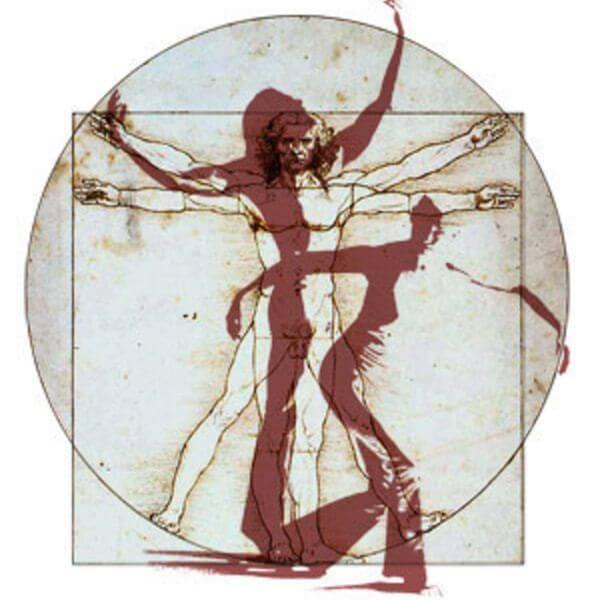
Why is the study of movement so important? Because of any damage or disease the body reacts to the change of excitability of muscles and impaired movement. And when the disease passes — motion is restored.
Muscle — an indicator of health and well-being.
Unlike other Sciences, kinesiology studying the mechanisms of the diseases, it does not analyze the nature of the medicines it evaluates (with a special clinical tests), how damaged the formation mechanism of movement in humans, and what needs to be done to restore it from this particular person. Kinesiology is called applied, because the assessment of movement disorders may serve as an indicator of any disease and damage to the human body.
The reaction of the muscles — muscular response (for any pathology on any information from external and internal receptors on the same order of the brain) occurs only in 3 variants:
EXAMPLE
We all know that when we want to report some sad news, we say: "Sit down, I want to say something".
Why? Because it is well known that when there is emotional stress in humans, it develops a weakness in the legs. And man it is better to pre-sit.
When a person violation occurs in the kidneys (inflammation, stone formation), then the patient feels pain in certain muscles.
When a person begins to worry, he has a tremor in his hands. It is also a manifestation of lack of coordination of muscles.
It would seem that different manifestations — emotional problem, inflammation in the kidneys, and output clinical one. Why?
Because all functional systems of the organism are directly connected with muscles, and therefore functional impairment at any level changes the strength of muscle contraction.
Why is it so important?
Because by studying any system of the body, studying diseases of the lungs, liver, kidneys, endocrine system, emotional disorders, we can to study these problems to make analysis or test the state of the muscles, which are connected with this functional system. published
From the book Vasilyeva L. F. "physical therapy and massage"
Also interesting: the Vicious cycle: back PAIN and BOWELS
Back pain: how to relieve an attack with breathing exercises
P. S. And remember, only by changing their consumption — together we change the world! ©
Join us in Facebook , Vkontakte, Odnoklassniki
Source: vk.com/wall-23903469?w=wall-23903469_7623
If the medicine is successful steps forward, improving diagnostics and medical treatment that allows patients more suffer from the painful muscular syndromes?
To answer this question it is necessary to find the cause. And it's not easy. So many misconceptions surround the painful muscular syndromes as a web, through which the doctor difficult to get.

MISCONCEPTION # 1
For a long time it was believed that the painful muscular syndromes is a consequence of osteochondrosis. Low back pain, as degenerative disease, or aging of the spine leads to the fact that disturbed the position of the vertebrae, intervertebral comprimida nerves and cause pain, so the treatment should be directed at elimination of bone growths, increased height of the intervertebral disc.
This assumption is not consistent because low back pain, as the ageing of the spine, from year to year progresses, pain syndromes occur predominantly in young and even children, and old age — at the stage of rapid development of osteochondrosis, pain syndromes disappear. But most importantly, pain syndromes appear, then disappear, and degenerative disc disease only progresses.
MISCONCEPTION # 2
Pain syndromes are connected with a vertical upright posture of man, so he is doomed to pay with pain syndromes for static overload of the muscles.
This assumption is not consistent because is very well known many patients who have pain syndromes appear in a horizontal position at night.
The real reason:
Pain syndromes in a vertical position appear only when the patient is in a stopped fall like the tower of Pisa, and forced other parts of the spine to keep from falling.
If a person is optimally Eiffel tower, loading the same muscles, there's no reason for formation of pain syndromes.
MISCONCEPTION number 3
The reason for development of pain is an uncomfortable position when the patient gets it, lying in a horizontal position. So treatment need to buy a lot of extra pillows, mattresses.
Again, this assumption is not consistent:
because of pain the patient is experiencing all night, and at any given time. For example, from one hour to three many patients Wake up from that numb hands, and then quietly fall asleep. While others Wake up from pain in the lumbar spine from five to seven.
Why only short time?
The real reason
This is due to the fact that at a particular time of the day there is activity of a certain Meridian of the body. During its activity decreases the tone of certain skeletal muscles, support the spine and there is compression of adjacent vessels and nerves, which leads to pain syndrome.
MISCONCEPTION 4
Pain syndromes is a consequence of trauma to the branches of the spinal nerves, the irritation causes a spasm and the shortening of the muscles innervated by them. Therefore, the most effective is the use of therapeutic drug blockades, when in shortened tight muscles were injected the pain killers.
This assumption is untenable, because:
Diseases of the peripheral nervous system are accompanied by a reduction in tone and excitability of the muscle, arm or leg just shrinks and loses its strength. Only with the accession of the inflammatory process in the nervous tissue there is swelling that causes pain.
The real reason
Just in response to the reduction in tone and excitability of some muscles there is a shortening of its antagonist, so the pain does not occur in the affected muscles, and in muscles, located on the opposite side of the trunk or limbs from the affected muscles.
MISCONCEPTION 5
The basis of any reduction in tone and excitability of the muscles is a breach of its innervation from the spinal cord so always treatment should be aimed at restoring function of the spine, as all diseases occur due to dysfunction of the spine.
This assumption is untenable, because:
spinal nerve innervates multiple muscles. Why only one muscle becomes shortened and painful, and others that are innervated by the same spinal nerve, remain painless? For example, spasm of the pectoralis minor, which gives pain in the shoulder and compressing the vessels and nerves of the hand, always occurs in the background of the decrease of tone of the large pectoral muscles that receive an innervation by the same nerves.
The real reason:
Muscles with the same innervation, be under the overwhelming influence of different internal organs. In the case of diseases of internal organ pathological impulses coming from him, cause the loss of muscle tone and the excitability of individual muscles
In order to answer what is the reason for this lies in the basis of disease specific patient, need to have feedback from the body.
So what today has to offer medicine as a reverse response from muscles? How to teach a doctor to "talk" with the body of the patient to understand what is the reason behind this pain syndrome and what the impact will be useful and which harmful?
For this specialist, who undertook the treatment of the patient with the painful muscular syndromes of different Genesis:
- master the fundamentals of applied kinesiology;
- learn how to find the localization hypovolumia of a muscle or group of muscles;
- to evaluate the reduction of their excitability of the stretch reflex;
- to determine, by means of special manual tests, the reason for the decline in their function and tone;
- and most importantly, before starting treatment to determine (through trial of medical treatment) if he owns a treatment method that can help patient.
WHAT IS APPLIED KINESIOLOGY
As you know, life is movement. The movement in its various manifestations from the invisible eye of the rhythmic contractions of the cells to giant leaps jumper. Kinesiology — the science that studies the formation mechanisms of movement and causes of its violation. Kinesio — movement, logos — doctrine.

Why is the study of movement so important? Because of any damage or disease the body reacts to the change of excitability of muscles and impaired movement. And when the disease passes — motion is restored.
Muscle — an indicator of health and well-being.
Unlike other Sciences, kinesiology studying the mechanisms of the diseases, it does not analyze the nature of the medicines it evaluates (with a special clinical tests), how damaged the formation mechanism of movement in humans, and what needs to be done to restore it from this particular person. Kinesiology is called applied, because the assessment of movement disorders may serve as an indicator of any disease and damage to the human body.
The reaction of the muscles — muscular response (for any pathology on any information from external and internal receptors on the same order of the brain) occurs only in 3 variants:
- increasing its sensitivity to brain signals, and overreaction;
- reduce its sensitivity to signals from the brain, excitability;
- reduction of sensitivity or distortion of signal perception and response.
EXAMPLE
We all know that when we want to report some sad news, we say: "Sit down, I want to say something".
Why? Because it is well known that when there is emotional stress in humans, it develops a weakness in the legs. And man it is better to pre-sit.
When a person violation occurs in the kidneys (inflammation, stone formation), then the patient feels pain in certain muscles.
When a person begins to worry, he has a tremor in his hands. It is also a manifestation of lack of coordination of muscles.
It would seem that different manifestations — emotional problem, inflammation in the kidneys, and output clinical one. Why?
Because all functional systems of the organism are directly connected with muscles, and therefore functional impairment at any level changes the strength of muscle contraction.
Why is it so important?
Because by studying any system of the body, studying diseases of the lungs, liver, kidneys, endocrine system, emotional disorders, we can to study these problems to make analysis or test the state of the muscles, which are connected with this functional system. published
From the book Vasilyeva L. F. "physical therapy and massage"
Also interesting: the Vicious cycle: back PAIN and BOWELS
Back pain: how to relieve an attack with breathing exercises
P. S. And remember, only by changing their consumption — together we change the world! ©
Join us in Facebook , Vkontakte, Odnoklassniki
Source: vk.com/wall-23903469?w=wall-23903469_7623
Free yourself from unspoken words!
Attention! Plastic, pesticides, and carcinogens -10 dangerous products from China
